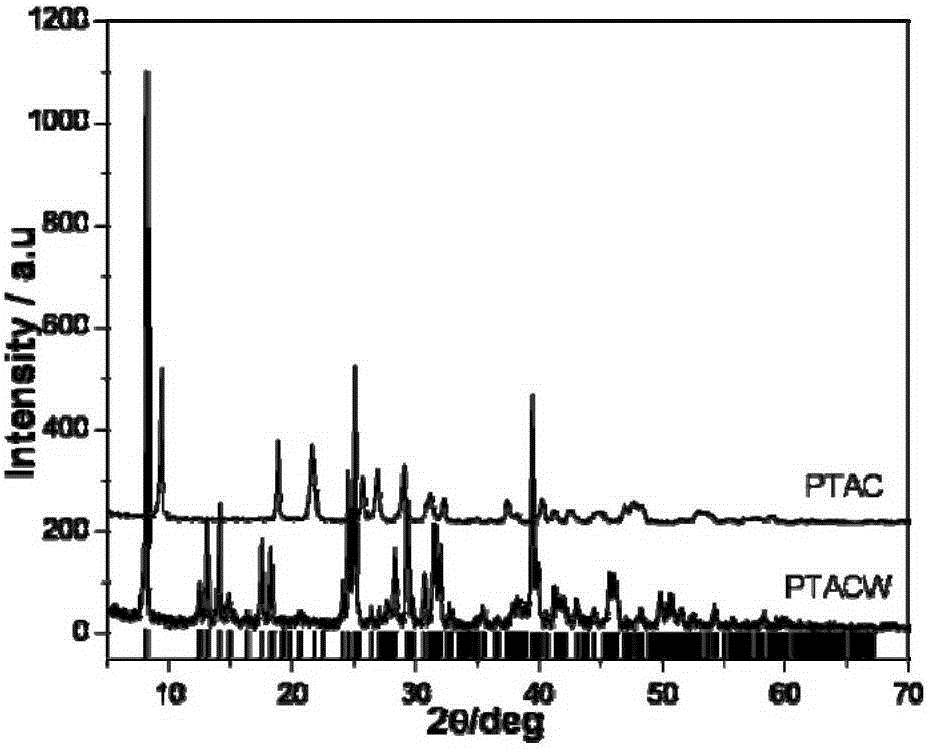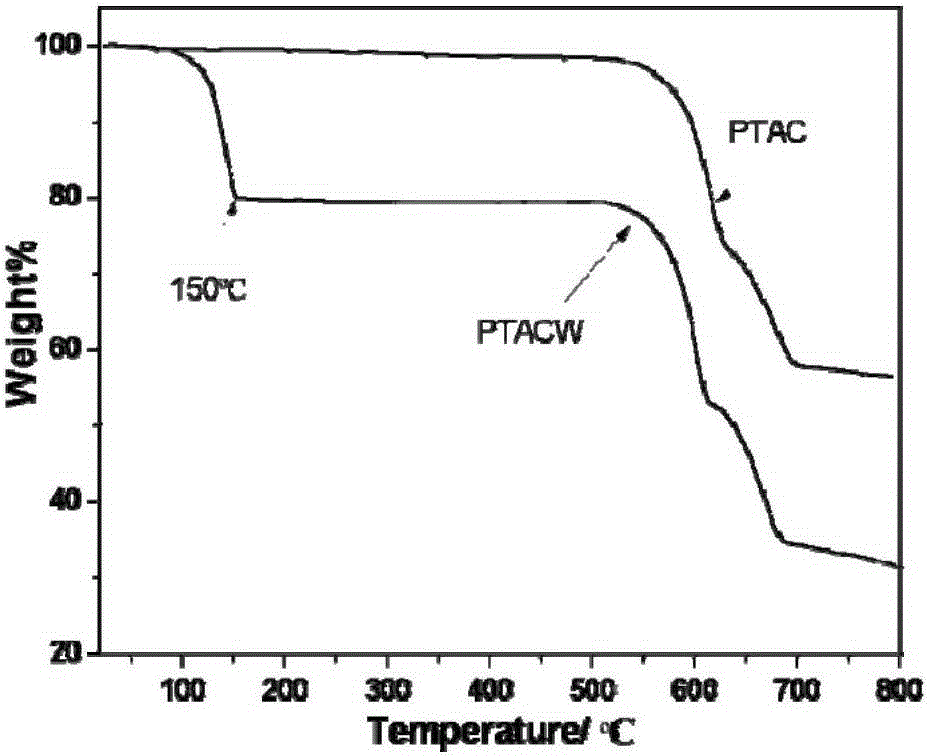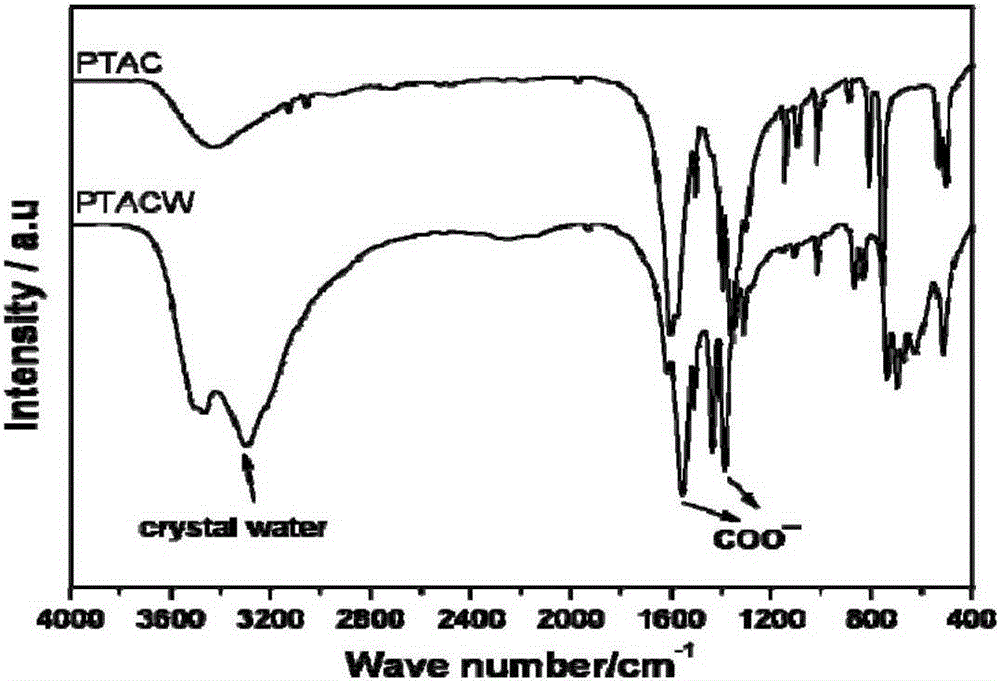Application of Calcium Terephthalate as Lithium-ion Battery Anode Material
A calcium terephthalate, lithium-ion battery technology, applied in secondary batteries, battery electrodes, circuits, etc., can solve the problem that stability and solubility have not been fundamentally improved, affecting the application process of lithium-ion batteries, modification The material capacity retention rate is low and other problems, to achieve the effect of excellent electrochemical cycle performance, low cost and slow specific capacity decay
- Summary
- Abstract
- Description
- Claims
- Application Information
AI Technical Summary
Problems solved by technology
Method used
Image
Examples
Embodiment 1
[0032] The preparation method of calcium terephthalate comprises the following steps:
[0033] A, take by weighing 3.3226g purity and be 99% terephthalic acid C 8 h 6 o 4 Add 0.9576g of analytically pure LiOH to 100ml of deionized water, stir for 10min, ultrasonicate for 1h, and then stand in a constant temperature drying oven at 80°C for 12h to obtain a clear solution of lithium terephthalate (PTAL) with a concentration of 0.1mol / L;
[0034] B, add 2.2196g anhydrous CaCl in the lithium terephthalate solution that step A obtains 2 , stirred and ultrasonicated for 6 hours, and then stood still in a constant temperature drying oven for 12 hours at a temperature of 80°C to obtain a mixed solution containing a white precipitate of calcium terephthalate;
[0035] C. The mixed solution containing calcium terephthalate obtained in step B is centrifuged and washed 3 times with deionized water, and the solid obtained by centrifugation is placed in a thermostat and dried for 6 hours ...
Embodiment 2
[0044] The PTAC and graphite obtained in Example 1 were ball milled, wherein the mass ratio of PTAC to graphite was 100:10, deionized water was used as solvent, the time was 5 hours, the rotating speed was 400r / min, and finally dried in a vacuum oven at 110°C 6h to get the sample PTACG10. The obtained sample was subjected to the same half-cell assembly as in Example 1, and its electrochemical performance was tested. Figure 8 It is the rate performance diagram of PTACG10. It can be seen from the figure that the average discharge specific capacity when the current density is 20mA / g is 231mAh / g, which is about 80mAh / g higher than that of the pure sample, and the ratio when the current density is 243mA / g The capacity is 164mAh / g. It shows that the mixed grinding treatment with graphite can improve the electrical conductivity of the electrode material, improve its reversible capacity and rate performance.
Embodiment 3
[0046] The PTAC obtained in Example 1 was coated by CVD. In a tube furnace with two temperature zones, put urea at the inlet end, the temperature is 200°C, put the sample at the outlet end, the temperature is 400°C, and the coating time is 6h. The final sample is marked as PTACU6. The obtained sample was subjected to the same half-cell assembly as in Example 1, and its electrochemical performance was tested. Figure 9 It is the rate performance diagram of PTACU6. It can be seen from the figure that the average discharge specific capacity when the current density is 13mA / g is 210mAh / g, which is about 60mAh / g higher than that of the pure sample, and the specific capacity when the current density is 244mA / g 95mAh / g.
PUM
| Property | Measurement | Unit |
|---|---|---|
| particle size | aaaaa | aaaaa |
Abstract
Description
Claims
Application Information
 Login to View More
Login to View More - R&D
- Intellectual Property
- Life Sciences
- Materials
- Tech Scout
- Unparalleled Data Quality
- Higher Quality Content
- 60% Fewer Hallucinations
Browse by: Latest US Patents, China's latest patents, Technical Efficacy Thesaurus, Application Domain, Technology Topic, Popular Technical Reports.
© 2025 PatSnap. All rights reserved.Legal|Privacy policy|Modern Slavery Act Transparency Statement|Sitemap|About US| Contact US: help@patsnap.com



